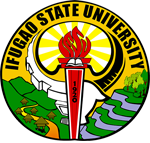



 About Ifugao Satoyama Meister Training Program
About Ifugao Satoyama Meister Training Program
Background
GIAHS are outstanding landscapes of aesthetic beauty that combine agricultural biodiversity, resilient ecosystems and a valuable cultural heritage. Located in a specific sites in the world, they sustainably provide multiple goods and services, food and livelihood security for millions of small-scale farmers (Food and Agriculture Organization of the United Nations).
The Ifugao Rice Terraces system was designated as GIAHS site in 2011 by the UN FAO and as World Heritage Site in 1995 by UNESCO. It is also resembles as a satoyama-like landscape and represents as socio-ecological production landscape. Satoyama is a Japanese term for landscapes that comprise a mosaic of different ecosystems types including secondary forests, agricultural lands, irrigation ponds and grassland, along with human settlements.
In Ifugao, Philippines, there is continuing loss of indigenous flora and fauna; watershed destruction; unregulated land use conversion; and reduced farm labor while Noto, Japan is beset by rapid depopulation (particularly the exodus of young people to urban areas) and ageing population leading to the disappearance of some communities abandoning its rich natural environment and traditional culture characterized by its satoyama (landscape) and satoumi (seascape).
Milestones
In May 2013, the United Nation’s Food and Agriculture Organization and Ishikawa Prefectural Government held an international forum to exchange knowledge on worldwide GIAHS. Here, the Noto Communique was adopted that includes the promotion of twinning of GIAHS sites between developed and developing countries. This led to the first GIAHS twinning in the world between Ifugao Rice Terraces (IRT) of the Philippines and Noto’s Satoyama and Satoumi (NSS) of Japan. Whereas GIAHS IRT and NSS have common challenges in terms of lack of young farmers and inheritance of traditional culture.
In order to address the issues, Ifugao State University (IFSU) and Kanazawa University took a central role in implementing the Project for the Human Resource Development Program for Sustainable Development of the GIAHS Designated Site Ifugao Rice Terraces or the Ifugao Satoyama Mesiter Training Program – Phase 1 under the Japan International Cooperation Agency (JICA) Technical Cooperation for Grassroots Projects from 2014 to 2016. Under the project, ISMTP was developed and implemented collaboratively by IFSU, University of the Philippines Open University (UPOU), Kanazawa University and the Provincial Government of Ifugao. After participating in various lectures, workshops, educational field trips and skills training, a total of 51 trainees from Banaue, Hungduan, Mayoyao and Kiangan accomplished a training course from 2014 to 2016. In Japan side, Ifugao GIAHS Support Committee (IGSC) was organized with 9 local city/town governments in Noto area, Ishikawa Prefectural Government, Sado City government, Kanazawa University, and Ishikawa Prefectural University in order to support activities of the project in Ifugao.
Preceding achievements of ISMTP-Phase 1, the renewed project submitted by the Ishikawa Prefectural Government and was officially adopted by JICA in March 2017. The ISMTP-Phase 2 project is called Strengthening the Twinning between GIAHS Designated Sites, Ifugao Rice Terraces and Noto’s Satoyama-Satoumi, for Sustainable Development implemented from 2017 to 2020. The objective of the new project is to develop and strengthen the new mechanism which sustainably develops Ifugao Rice Terraces and Noto’s Satoyama and Satoumi by GIAHS concept dissemination, human resource development and skill exchange. It will focus on capacity building of human resource including strengthening ISMTP and exchange skills between the community people in Ifugao and Noto. The Ifugao GIAHS Support Committee (IGSC) will take the lead role as the implementing organization of Japan side, instead of Kanazawa University.
Currently, ISMTP-Phase 3 is now solely implemented by Ifugao State University called Sustaining Heritage Initiatives on Research, Development, Extension, and Training through Glocal Partnerships. It aims to capacitate stakeholders of the Ifugao Rice Terraces for community revitalization; innovate research-projects for the sustainable development of the IRT system and heritage conservation; strengthen and expand global and local partnership; and establish resource and knowledge management center on Indigenous Knowledge and IRT studies.
The ISMTP
Ifugao Satoyama Meister Training Program is a human resource development program that capacitates stakeholders of the Ifugao Rice Terraces for its sustainable development. It is a training, development, and program that advocates lifelong learning of trainees who are committed to sustain the Ifugao Rice Terraces.
ISMTP implements a unique Training framework on human capacity building for GIAHS sustainable development and twinning mechanisms. This framework of training program is a multilateral synergy among the academe, local government, and community applying international and local platforms of GIAHS concepts, UNESCO World Heritage values, Socio-ecological Production Landscapes (SEPLs) or satoyama principles, and indigenous knowledge systems of Ifugao. It is a multi-disciplinary combination of lectures and workshops, skills trainings, field exposures and conduct of research-projects with intensive mentoring.
The conduct of individual research-project on Ifugao Rice Terraces System studies with intensive mentoring is a modality that fusions the perspectives of stakeholders of the Ifugao Rice Terraces and experts from the academe in trying to address the current challenges of the IRT through research. These are translated into extension projects that aids in economic sustainability and professional development of both trainees and mentors.
The international cooperation on GIAHS and human networking component of ISMTP is an initiative of exchange among the GIAHS international and local community executed through GIAHS management framework sharing, knowledge co-creation on heritage conservation, and community revitalization. It created a community of scholastic, cultural, and governmental benchmarking practice that aids in the sustainable development of GIAHS sites in Japan and the Philippines.
Subject topics taught include the following:
To date, the following are the notable achievements of ISMTP: